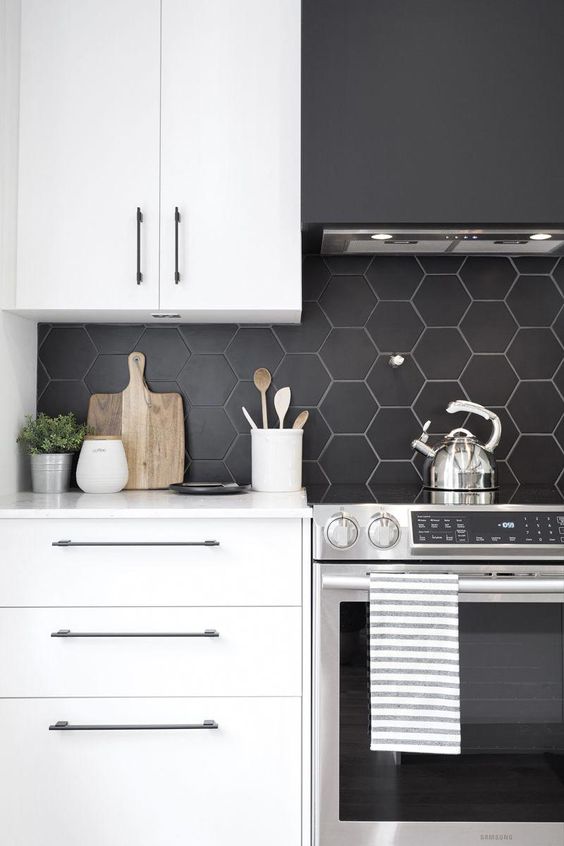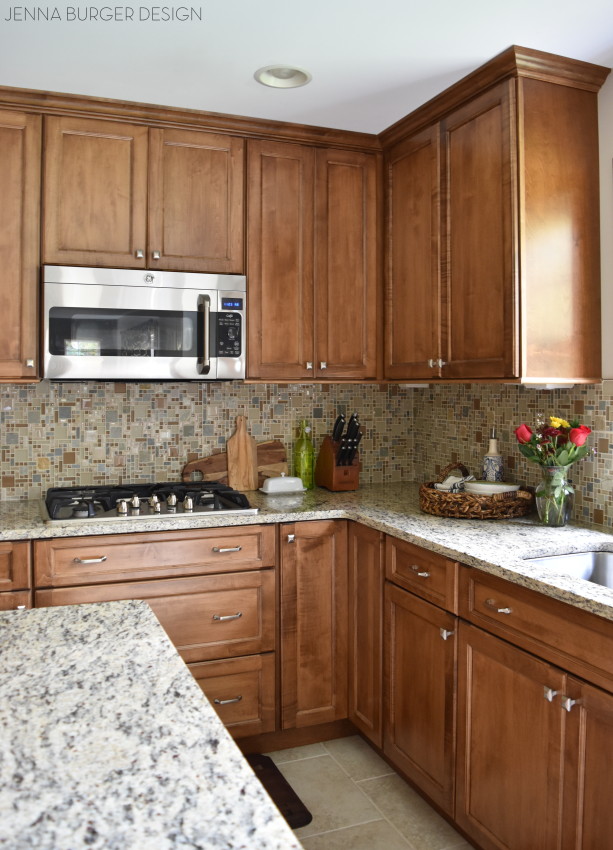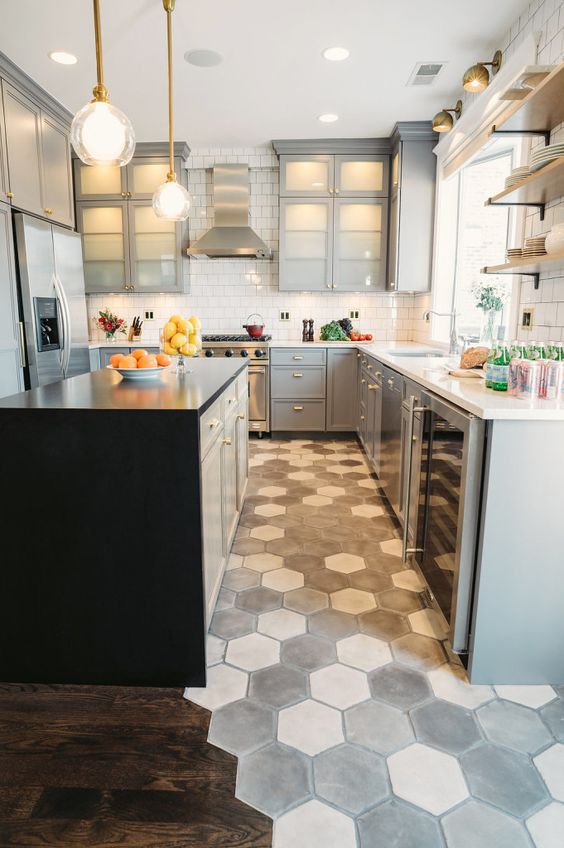Honeycomb kitchen backsplashes have become increasingly popular in recent years due to their unique geometric design and versatile appeal. The hexagonal shape of honeycomb tiles offers a balance between modern aesthetics and timeless charm, making them a favorite among homeowners and designers alike. Whether you’re planning a complete kitchen overhaul or just looking for a simple way to elevate your space, a honeycomb backsplash can make a statement. One of the most appealing aspects of this design choice is its ability to adapt to various styles, from sleek and minimalist to rustic and farmhouse-inspired. Depending on the material, color, and size you choose, the honeycomb pattern can either serve as a subtle backdrop or a bold focal point in your kitchen.
One of the first decisions you’ll need to make when choosing a honeycomb backsplash is the material. Ceramic and porcelain tiles are popular for their durability, affordability, and ease of maintenance. They come in a wide range of colors and finishes, including glossy, matte, and textured options. Glass honeycomb tiles, on the other hand, offer a sleek and reflective surface that can make your kitchen feel brighter and more spacious. For a more luxurious feel, marble or natural stone honeycomb tiles bring in organic textures and subtle color variations. Metal tiles, such as stainless steel or brushed brass, are another option for creating a modern, industrial vibe. Each material has its unique characteristics, so it’s essential to consider both your aesthetic preferences and practical needs.

Color choice is another critical aspect of designing a honeycomb backsplash. Neutral tones like white, gray, or beige are classic and versatile, easily blending with a variety of cabinetry and countertop styles. If you’re looking to make a bold statement, consider vibrant colors like teal, navy, or even metallic hues. You could also opt for a gradient or ombre effect, transitioning from darker tiles at the bottom to lighter ones at the top. For those who want a bit of contrast, pairing a honeycomb backsplash with dark grout can emphasize the geometric pattern and add depth to the design. On the other hand, matching the grout color to the tiles creates a seamless and understated look.
The size of the honeycomb tiles plays a significant role in the overall visual impact. Smaller tiles create a more intricate and detailed pattern, which can be especially striking in a compact kitchen or as an accent behind the stove. Larger tiles, however, offer a clean and modern look, making them ideal for open, spacious kitchens. It’s also worth considering the layout of the tiles. While the classic honeycomb pattern is symmetrical and uniform, you can get creative with variations such as offset or staggered arrangements to add a dynamic touch.

Installation of a honeycomb backsplash can be a bit challenging, especially for those with limited DIY experience. The hexagonal shape requires precise alignment and careful attention to detail to avoid gaps and uneven edges. Professional installation is often recommended to ensure a flawless finish. However, if you’re up for the challenge, many tile manufacturers offer peel-and-stick options that make the process more accessible to beginners. These adhesive-backed tiles are relatively easy to cut and install, though they may not have the same durability as traditional materials.
Maintenance is another factor to keep in mind. Most honeycomb backsplashes are easy to clean with a damp cloth and mild detergent, but the grout lines can be prone to staining if not properly sealed. Regularly applying a grout sealer can help protect against discoloration and make cleaning easier. If you opt for a high-gloss or reflective finish, be prepared for fingerprints and smudges to be more noticeable, particularly on glass or metal tiles. Choosing a matte or textured finish can help minimize the appearance of these marks.

Incorporating lighting can enhance the visual appeal of a honeycomb backsplash. Under-cabinet LED lights are a popular choice, as they illuminate the backsplash and highlight its intricate pattern. Warm lighting can create a cozy and inviting atmosphere, while cool lighting lends a modern and crisp feel. You might also consider using colored lights for a dramatic effect, especially if your honeycomb tiles are neutral or metallic.
Honeycomb backsplashes can also serve functional purposes. The tight, interlocking design of the hexagonal tiles provides excellent coverage and reduces the risk of moisture or grease penetrating the surface. This makes them a practical choice for areas behind the sink or stove. Additionally, their geometric pattern naturally draws the eye upward, creating the illusion of a taller and more spacious kitchen.
For homeowners who enjoy mixing styles, a honeycomb backsplash can serve as a versatile canvas. Pairing it with wooden cabinets and earthy tones can create a rustic, nature-inspired look. For a sleek and contemporary aesthetic, combine it with glossy finishes and stainless steel appliances. If you’re drawn to eclectic designs, consider mixing materials or incorporating accent tiles within the honeycomb pattern to add visual interest and personality.

Cost is an important consideration when planning your backsplash project. Honeycomb tiles can range from budget-friendly options to high-end materials, depending on the size, material, and finish. Ceramic tiles are generally the most affordable, while natural stone and custom-designed options can be significantly more expensive. To save on costs, you might consider using honeycomb tiles as an accent rather than covering the entire backsplash area.
If you’re looking to add a unique twist, consider customizing your honeycomb backsplash. Some homeowners opt for engraved or etched tiles that incorporate subtle designs or text. Others experiment with mixed materials, such as combining glass and metal tiles for a multidimensional effect. You can even use the honeycomb pattern to create a mosaic or mural, turning your backsplash into a true work of art.
In terms of trends, metallic honeycomb tiles have gained popularity in recent years, especially in gold, copper, and rose gold finishes. These tiles add a touch of glamour and sophistication, making them a standout feature in any kitchen. Another trend is the use of oversized honeycomb tiles, which offer a more contemporary and minimalist vibe compared to their smaller counterparts.
A honeycomb backsplash is not just about aesthetics; it’s also an opportunity to showcase your personality and design preferences. Whether you prefer bold colors, subtle textures, or intricate patterns, the honeycomb design can be tailored to suit your vision. It’s a versatile and impactful choice that can transform your kitchen into a space that feels both functional and inspiring.

Common Mistakes to Avoid
Ignoring Practical Considerations: Choosing tiles solely based on appearance without considering factors like durability, ease of maintenance, and suitability for your kitchen environment can lead to long-term dissatisfaction.
Skipping Professional Help: Attempting a DIY installation without proper experience can result in misaligned tiles, uneven grout, and a subpar finish. Professional installation is often worth the investment.
Overlooking Grout Color: The wrong grout color can disrupt the visual harmony of the honeycomb pattern. Test different grout options before committing to one.
Neglecting Proper Sealing: Failing to seal the tiles and grout can lead to staining and moisture damage over time.
Choosing Trend-Driven Options: While trendy materials and colors can be exciting, ensure they align with your long-term vision for your kitchen to avoid regret down the line.
Underestimating Maintenance Needs: High-gloss or reflective finishes may look stunning but require frequent cleaning to maintain their appearance.

Are honeycomb backsplashes expensive to install?
The cost of a honeycomb backsplash varies widely depending on the material and size of the tiles. Ceramic and porcelain options are generally more budget-friendly, while marble or custom designs can be expensive. Installation costs may also increase due to the intricate alignment required, particularly if professional services are needed.
Can I install a honeycomb backsplash myself?
While DIY installation is possible, especially with peel-and-stick tiles, the hexagonal shape requires precise cutting and alignment. If you’re not experienced with tiling, it’s often better to hire a professional to ensure a flawless finish.
How do I clean and maintain a honeycomb backsplash?
Regular cleaning with a damp cloth and mild detergent is sufficient for most materials. To protect the grout from stains, apply a grout sealer annually. For high-gloss finishes, be prepared to clean smudges and fingerprints more frequently.

What’s the best material for a honeycomb backsplash?
The best material depends on your needs and aesthetic preferences. Ceramic and porcelain are durable and easy to maintain, while glass and metal offer a sleek, modern look. Marble and natural stone provide a luxurious feel but may require more upkeep.
Do honeycomb backsplashes work in small kitchens?
Yes! Smaller honeycomb tiles can add a sense of detail and texture to a compact kitchen, while larger tiles can create a clean and open feel. Light colors and reflective finishes can also help make a small space feel larger.
How do I choose the right color and finish?
Consider your kitchen’s overall design and the atmosphere you want to create. Neutral tones are versatile, while bold colors make a statement. Glossy finishes reflect light and add brightness, while matte options offer a more subdued and modern look.

Kitchen Tile Backsplash Options + Inspirational Ideas

Backsplash ideas on Pinterest Neutral colors, Backsplash tile and Subway

Hexagon Tile Backsplash – Ideas on Foter

Eye-Catchy Hexagon Tile Ideas For Kitchens

Related Posts:
- Fasade Silver Kitchen Backsplash
- Vinyl Kitchen Backsplash
- Stainless Kitchen Backsplash Ideas
- Fancy Kitchen Backsplash
- Cool Kitchen Backsplash Ideas
- White Subway Tile Kitchen Backsplash Photos
- Silver Kitchen Backsplash Tiles
- Backsplash Ideas In The Kitchen
- Nice Kitchen Backsplash
- White And Grey Kitchen Backsplash Ideas